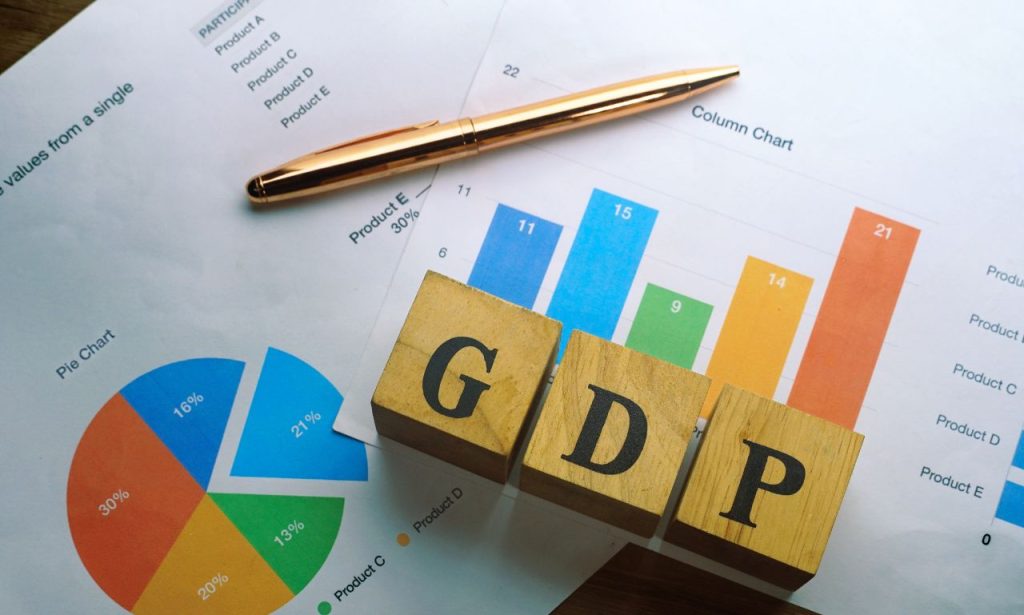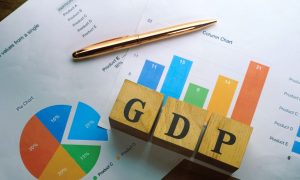Consumer confidence is at the heart of every economic forecast. American consumers face a complex landscape of shifting policies, technological advances, and evolving market conditions that will shape their spending patterns.
This year presents unique challenges and opportunities. Incoming administration policies, persistent inflation concerns, and labor market dynamics create an intricate web of factors influencing consumer sentiment. Understanding these elements becomes crucial for businesses, investors, and policymakers’ planning strategies.
We’ll examine how policy changes affect real GDP growth, explore sector-specific impacts, and analyze the relationship between consumer confidence and actual spending behavior.
Policy Changes and Government Actions
The incoming administration will bring significant policy shifts that directly impact consumer confidence. Tax policy changes, regulatory adjustments, and fiscal spending decisions will create ripple effects throughout the economy.
Recent Federal Reserve Bank of San Francisco surveys indicate that policy uncertainty ranks among the top concerns for both businesses and consumers. People who feel uncertain about future government actions tend to postpone major purchases and increase savings rates.
Corporate tax rate modifications affect business investment patterns, ultimately influencing job creation and wage growth. These changes take months to filter through to actual consumer spending, but confidence metrics react almost immediately to policy announcements.
Trade policies, including potential tariff adjustments, create additional complexity. The average tariff rate impacts import prices, which consumers notice quickly in retail stores. Smart businesses monitor these policy signals to anticipate shifts in consumer behavior before they show up in spending data.
Modulation of Real GDP Growth

Real GDP growth provides the foundation for sustainable consumer spending increases. Current projections suggest moderate growth, but the pace remains sensitive to various economic factors.
The relationship between GDP growth and consumer confidence isn’t always linear. Sometimes, confidence leads to growth indicators; other times, it lags behind the actual economic performance. This disconnect creates opportunities for businesses that understand the timing differences.
Labor market conditions play a crucial role in this relationship. Unemployment rates below historical averages typically boost confidence, but wage growth matters more for actual spending power. Consumers feel more comfortable making discretionary purchases when real wages increase faster than inflation.
Regional variations in GDP growth create different confidence patterns across the country. Areas with strong tech sectors or energy production often show higher confidence levels, while regions dependent on manufacturing face more volatility based on trade policies.
Normalization in Consumer Spending Habits
Post-pandemic spending patterns continue evolving as consumers establish new normal behaviors. The shift toward experiences over goods remains strong, but housing costs and elevated mortgage rates are reshaping priorities.
Discretionary spending shows interesting patterns across income levels. Affluent and middle-income consumers maintain relatively stable expenditures on entertainment and travel, while lower-income households focus more heavily on essential purchases.
The housing sector creates a particularly complex dynamic. Elevated mortgage rates reduce home purchases but also decrease mobility, leading some consumers to spend more on home improvements and renovations instead of moving.
Subscription services and digital purchases represent growing segments of consumer spending. These smaller, recurring purchases feel less risky to consumers than big-ticket items, creating steady revenue streams for businesses in these categories.
Technology and Innovation
Technology adoption continues accelerating, fundamentally changing how consumers approach purchasing decisions. Artificial intelligence tools help people compare prices, research products, and make more informed choices.
E-commerce growth remains robust, but physical retail isn’t disappearing. Instead, successful retailers create seamless omnichannel experiences that blend digital convenience with in-person service. Consumer confidence in online transactions has increased, particularly for younger demographics.
Fintech innovations make credit more accessible and payment options more flexible. Buy-now-pay-later services appeal to consumers who want to maintain cash flow while making purchases, though economists oversee these trends for potential debt accumulation issues.
Cryptocurrency and digital assets create new wealth effects for some consumers. When crypto values rise, holders often increase discretionary spending, although volatility makes this an unreliable economic driver.
Financial Services
Banking sector health directly influences consumer confidence through credit availability and lending standards. Current conditions show relatively stable lending practices, though banks remain cautious about specific segments.
Credit card debt levels provide insight into consumer financial stress. Recent Federal Reserve data shows manageable debt levels overall, but certain demographic groups face higher pressure. Banks adjust their marketing and lending strategies based on these patterns.
Investment account balances affect spending behavior, particularly for older consumers approaching or retiring. Stock market volatility creates wealth effects that ripple through purchases of luxury goods and travel spending.
Digital banking adoption has accelerated in recent years, and consumer comfort with mobile financial services continues to grow. This trend reduces friction in spending decisions and makes impulse purchases easier across all age groups.
Energy and Utilities
Energy costs significantly impact consumer spending power and confidence. Gasoline prices receive the most attention, but electricity and heating costs influence household budgets meaningfully.
Regional energy price differences create varying confidence levels across the country. Areas with abundant renewable energy sources often show more stable consumer sentiment, while regions dependent on imported energy face more volatility.
In many cases, utility bill predictability matters more to consumers than absolute costs. Programs that provide stable, predictable energy costs help maintain confidence even when prices rise gradually.
Electric vehicle adoption creates new spending patterns as consumers adjust to different fuel and maintenance costs. Early adopters often show higher confidence in technology investments, influencing broader market trends.
Emphasizing Value and Cost-Effectiveness
Price sensitivity has increased across all income levels as consumers become more selective about purchases. Value-oriented retailers and brands gain market share by addressing these concerns directly.
Private label products continue to gain acceptance as quality improvements make them competitive with name brands. Retailers investing in in-store brand development often see improved customer loyalty and higher margins.
Promotional strategies require more sophistication as consumers become better at finding deals through apps and comparison websites. Successful businesses focus on providing genuine value rather than just promotional pricing.
Subscription models appeal to cost-conscious consumers by providing predictable monthly expenses. However, subscription fatigue is emerging as people accumulate multiple services, creating opportunities for bundling and consolidation.
Developing Sector Rotation Strategies
Different economic sectors perform differently based on consumer confidence levels and spending patterns. Understanding these relationships helps businesses and investors position themselves appropriately.
Consumer staples typically remain stable regardless of confidence levels, while discretionary sectors show more volatility. However, within discretionary categories, some segments, like home improvement and automotive maintenance, prove more resilient than others.
Technology sector performance often leads to changes in consumer confidence rather than following them. Innovation cycles create demand patterns that can boost overall economic optimism.
Healthcare and pharmaceutical sectors show complex relationships with confidence, often maintaining steady demand regardless of economic sentiment while benefiting from increased spending during high-confidence periods.
Fostering Meaningful Customer Connections
Building strong customer relationships becomes more critical during periods of economic uncertainty. Businesses that maintain regular communication and provide genuine value retain customers better than those focusing solely on price competition.
Customer service quality directly impacts brand loyalty and word-of-mouth recommendations. In an environment where consumers research purchases more thoroughly, positive reviews and referrals carry increased weight.
Community engagement through local events, sponsorships, and social responsibility initiatives helps businesses maintain relevance during changing economic conditions. Consumers increasingly prefer supporting companies that align with their values.
Personalization technology allows businesses to tailor offerings to individual customer needs and preferences. This approach builds stronger relationships while improving conversion rates and customer lifetime value.
Will Consumer Spending Increase?
Current indicators suggest modest growth in consumer spending, though the pace will likely vary by quarter and sector. Personal income growth, employment levels, and inflation trends will determine the trajectory.
Pent-up demand for specific categories remains strong, particularly for travel and entertainment services that were restricted during previous years. However, housing-related spending may remain constrained due to affordability challenges.
Demographic trends support continued spending growth as millennials reach peak earning years and Gen Z enters the workforce in larger numbers. These younger consumers show different priorities than previous generations, favoring experiences and technology over traditional goods.
Regional economic variations mean spending growth won’t be uniform across the country. Areas with diverse economies and strong job markets will likely see stronger growth than regions dependent on single industries.
How Does Consumer Confidence Affect Spending?

Consumer confidence is both a leading and a lagging indicator of actual spending behavior. High confidence typically precedes increased spending on discretionary items, while low confidence leads to increased savings rates and delayed purchases.
The relationship varies by purchase category and consumer income level. Essential purchases continue regardless of confidence levels, while luxury goods and services correlate strongly with sentiment measures.
Confidence surveys capture emotional responses to economic conditions that don’t always translate directly to spending behavior. Sometimes, consumers express pessimism while spending, creating opportunities for businesses that focus on actual behavior rather than survey responses.
Media coverage and social media discussions amplify confidence effects by creating shared narratives about economic conditions. Businesses that monitor these conversations can anticipate shifts in consumer behavior before they appear in sales data.
Conclusion
Consumer confidence will face multiple crosscurrents from policy changes, technological innovation, and evolving spending priorities. Businesses and investors who understand these dynamics can position themselves to benefit from emerging opportunities while managing potential risks.
Success requires focusing on actual consumer behavior rather than just sentiment surveys. While confidence matters, delivering genuine value and maintaining strong customer relationships provides more reliable protection against economic uncertainty.
ALSO READ: How to Keep Your Business Afloat in Economic Tough Times
FAQs
A: Employment rates, inflation levels, policy changes, and stock market performance remain the primary drivers of consumer confidence.
A: Discretionary spending typically responds within 1-3 months of confidence changes, while essential purchases remain relatively stable.
A: Retail, travel, dining, automotive, and luxury goods typically correlate strongly with confidence levels.
A: Yes, by focusing on value and essential needs and building strong customer relationships that transcend economic cycles.
A: Local employment conditions, housing costs, and industry mix create significant regional variations in how confidence translates to spending.




